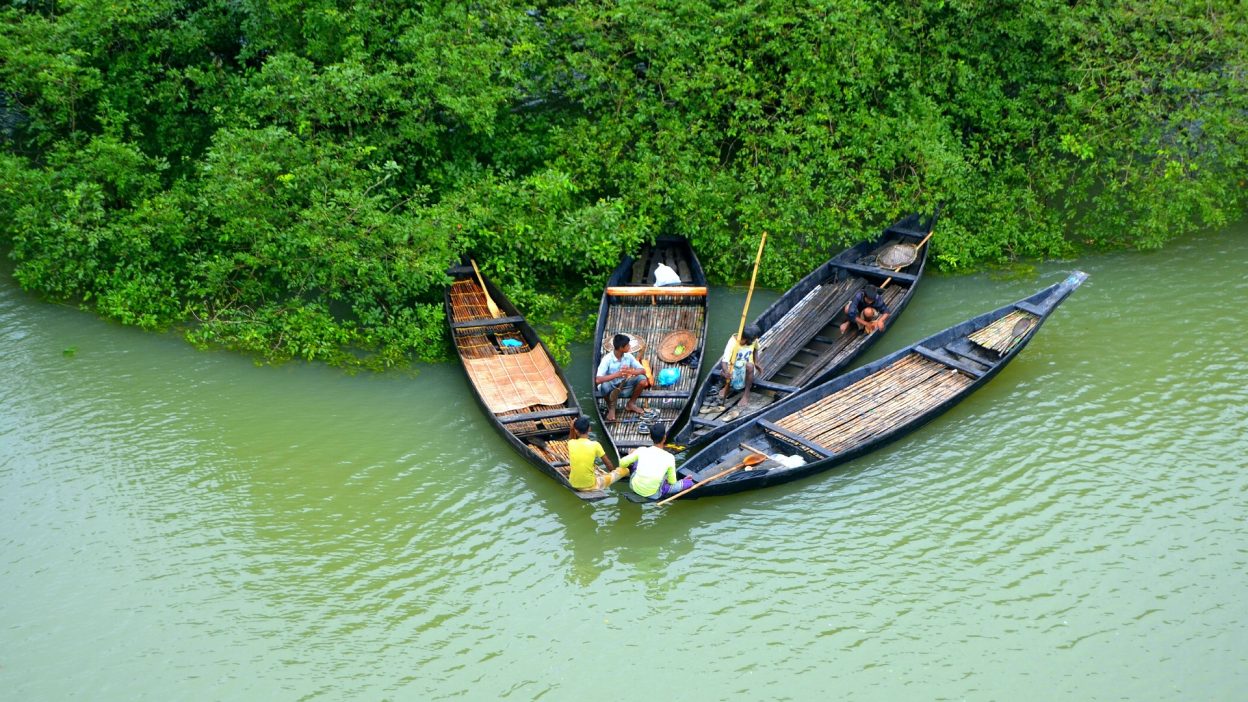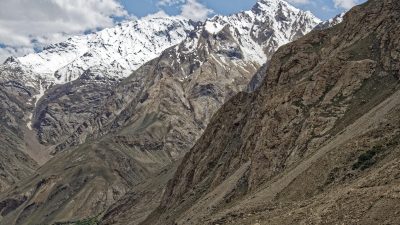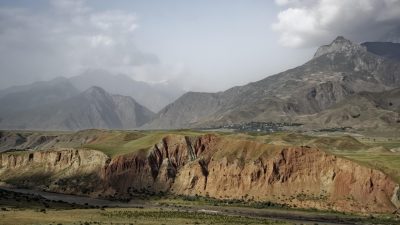Bengal’s Forgotten Catastrophe
1. The Storm That Shook Bengal: What Was the Great Backerganj Cyclone of 1876?
The Great Backerganj Cyclone of 1876 stands as one of the deadliest cyclones in history, wreaking havoc across the Bengal region, particularly in present-day Bangladesh. This monstrous storm unleashed an unparalleled level of destruction, wiping out entire communities, drowning vast regions, and leading to one of the most catastrophic humanitarian crises of the 19th century.
Forming over the Bay of Bengal in late October, the cyclone gained terrifying strength as it surged towards land. With wind speeds reaching an estimated 220 km/h (137 mph), it tore through coastal settlements, leaving devastation in its wake. However, it wasn’t just the wind that made this cyclone so deadly—it was the massive storm surge that swallowed villages whole, killing tens of thousands in a matter of hours.
2. When Nature Turned Ruthless: The Timeline of Destruction
The storm began forming around 18 October 1876, as low pressure intensified over the Bay of Bengal. Within days, it had transformed into a violent system, churning through the ocean, growing stronger with each passing hour. By 30 October 1876, meteorological reports indicated that the cyclone had reached its peak intensity, and a deadly landfall was imminent.
- 31 October 1876: The cyclone slammed into the coast, striking Backerganj (now part of Bangladesh) with unimaginable force. Winds roared like an unstoppable beast, toppling homes, uprooting trees, and destroying communication lines.
- A night of horror: As darkness fell, a 12-metre (40-foot) storm surge crashed into the low-lying coastal areas, flooding villages and killing thousands instantly. Those who sought refuge in trees or rooftops were swept away by the merciless waters.
- Aftermath in early November: As the storm retreated, it left behind an apocalyptic scene. The air was filled with the stench of decaying bodies, the land was submerged under stagnant water, and the survivors faced a new enemy—disease and starvation.
3. Death Toll, Destruction, and Unbelievable Statistics
The human cost of this disaster was staggering. The figures recorded at the time tell a grim tale of destruction:
- Estimated Death Toll: Over 200,000 people lost their lives. Some drowned immediately, others perished in the days that followed due to starvation, injuries, and disease.
- Injured Victims: Tens of thousands were left wounded, many with severe cuts, fractures, or infections caused by the debris-laden waters.
- Homes Destroyed: An estimated 100,000 homes were obliterated, leaving millions homeless and exposed to the elements.
- Livestock Losses: Over 50,000 cattle and other livestock perished, further deepening the economic devastation for farmers.
- Crops Ruined: Entire rice fields were flooded, leading to an acute food shortage that triggered a deadly famine in the months that followed.
4. The Silent Assassin: How the Storm Surge Became the Biggest Killer
The cyclone’s winds were terrifying, but it was the storm surge that delivered the deadliest blow. The geography of Bengal’s low-lying coastal plains made it extremely vulnerable to flooding. When the 40-foot-high wall of water surged inland, it swallowed everything in its path—people, homes, trees, and even small islands.
This surge was so powerful that it permanently altered the landscape, submerging land and reshaping river channels. Survivors recalled how the sea appeared to rise up out of nowhere, rushing towards them faster than they could run. Many tried to cling to trees or rooftops, only to be pulled under by the raging waters.
5. A Perfect Storm: The Role of Weather and Climate in the 1876 Disaster
The Backerganj Cyclone didn’t occur in isolation; it was part of a broader pattern of deadly weather events that plagued Bengal during that era. Several factors made this cyclone particularly deadly:
- Peak Cyclone Season: October and November are historically the most active months for cyclones in the Bay of Bengal.
- Warm Ocean Waters: The unusually high sea surface temperatures fuelled the storm’s rapid intensification.
- Lack of Early Warning Systems: In the 19th century, meteorological forecasting was primitive, leaving people completely unaware of the approaching catastrophe.
- Geographical Vulnerability: The Bengal Delta is naturally prone to storm surges, making it one of the most cyclone-affected regions in the world.
6. After the Storm: A Famine That Prolonged the Suffering
As if the cyclone itself wasn’t devastating enough, its aftermath created conditions for one of Bengal’s worst famines. With crops destroyed and food supplies dwindling, the survivors faced starvation. The government’s response was painfully slow, and relief efforts were insufficient.
In the weeks following the disaster, cholera and dysentery outbreaks killed thousands more. Many bodies remained unburied, contaminating the water supply and spreading disease. Entire families were wiped out, and the social fabric of communities was torn apart.
7. Could This Tragedy Have Been Prevented? Lessons from the 1876 Cyclone
- Failure of Governance: The British colonial administration’s relief efforts were inadequate, highlighting the lack of disaster preparedness.
- Lack of Infrastructure: Poorly built homes and the absence of cyclone shelters led to massive casualties.
- No Early Warning System: Had there been an advanced warning system, many lives could have been saved.
- Poor Relief Distribution: Government aid was slow, and thousands starved despite food reserves being available elsewhere.
8. The Forgotten Catastrophe: Why Does History Overlook This Cyclone?
Despite being one of the deadliest cyclones in history, the Great Backerganj Cyclone of 1876 remains largely overlooked. Unlike well-documented disasters in Europe or North America, colonial-era tragedies in South Asia were often underreported or downplayed by the British administration. The disaster was considered an unfortunate but inevitable consequence of nature, rather than a failure of governance.
One major reason for this neglect was the priorities of the British colonial government. The loss of Indian lives was not given the same urgency as disasters affecting Britain. Additionally, with no global media at the time, the suffering of millions in Bengal did not reach the wider world. The British Raj controlled the flow of information, and the deaths of over 200,000 people were recorded in official reports, but they did not spark any significant reforms or international humanitarian efforts.
Another reason is that natural disasters affecting the Indian subcontinent were so frequent that this tragedy was soon overshadowed by other cyclones, floods, and famines in the following decades. The 1876 cyclone was followed by the Great Famine of 1876–78, which killed millions across India, shifting attention away from the cyclone’s devastation. As a result, this massive disaster has faded from mainstream historical accounts, despite its staggering impact.
9. How the 1876 Cyclone Shaped Modern Disaster Preparedness
Although immediate lessons were not implemented, the long-term impact of this cyclone contributed to major advancements in disaster preparedness in South Asia. Over the years, scientists and governments recognised the dangers posed by Bay of Bengal cyclones and took steps to improve forecasting, emergency response, and infrastructure.
Some of the key changes that emerged over time include:
- Cyclone Early Warning Systems – Modern meteorological technology now provides accurate tracking of cyclones, allowing governments to warn populations days in advance. This was not possible in 1876, when communities were caught completely off guard.
- Construction of Cyclone Shelters – In low-lying areas of Bangladesh and India, thousands of cyclone-resistant shelters have been built, providing safe havens during storms. These structures are designed to withstand extreme winds and flooding.
- Mass Evacuation Strategies – Today, millions of people can be evacuated from cyclone-prone areas before a storm makes landfall, reducing fatalities significantly. Had such measures existed in 1876, thousands of lives could have been saved.
- Disaster Relief Frameworks – Governments now have rapid-response teams and international aid protocols in place to deliver food, water, and medical assistance after disasters. In contrast, the British government’s slow and inadequate response in 1876 contributed to further loss of life.
These improvements mean that while cyclones continue to be deadly, their human cost has been significantly reduced compared to disasters like the Great Backerganj Cyclone. However, as climate change increases the frequency and intensity of tropical storms, continued investment in disaster preparedness is critical.
10. Conclusion: A Tragedy That Should Never Be Repeated
The Great Backerganj Cyclone of 1876 remains one of the worst natural disasters in human history, yet it has been largely forgotten. The massive death toll, the suffering of survivors, and the subsequent famine highlight the devastating combination of natural forces and human negligence. Had there been an early warning system or an efficient relief plan, thousands of lives could have been spared.
While much progress has been made in disaster management, the lessons of 1876 remain relevant today. Climate change is intensifying storms worldwide, and coastal communities remain vulnerable to catastrophic cyclones. Governments must prioritise climate resilience, infrastructure development, and emergency preparedness to prevent future tragedies of this scale.
The people of Bengal in 1876 endured unimaginable suffering, but their story must not be lost to history. Instead, it should serve as a reminder of the importance of preparedness, governance, and human resilience in the face of nature’s fury.
FAQs
1. How many people died in the Great Backerganj Cyclone of 1876?
Over 200,000 people perished due to the storm, storm surge, and famine that followed.
2. What made this cyclone so deadly?
The 40-foot storm surge flooded entire villages, and the lack of early warning meant that people had no chance to escape.
3. Could this disaster have been prevented?
With better forecasting, proper infrastructure, and timely relief efforts, the loss of life could have been significantly reduced.
4. Did the British colonial government provide aid?
The British Raj’s response was slow and insufficient, failing to provide adequate relief and allowing starvation to take hold.
5. What lessons were learned from this cyclone?
The disaster underscored the need for early warning systems, cyclone shelters, and improved disaster response policies to prevent future tragedies.




